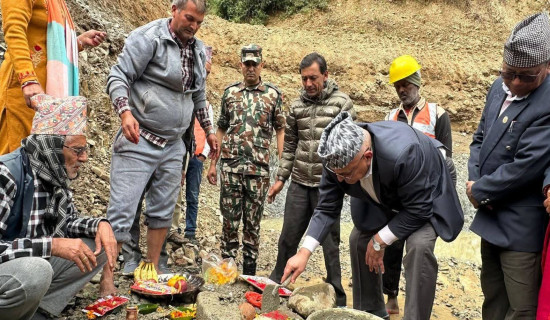- Monday, 24 November 2025
Tackle Heatwaves
Rohit Kumar Yadav
There are mainly four typical climate seasons in Nepal. They include pre-monsoon (March- May), monsoon (June-September), post-monsoon (October-November) and winter (December-February). The Terai region of the country is now bracing for a summer with high temperatures as hotwaves become a common occurrence during the summer months. The effects of hotwaves can be severe, with dehydration, heat exhaustion, and heatstroke posing a serious risk to vulnerable groups such as children, elderly people, and those with underlying health conditions.
With schools and communities at risk, it is essential to make preparations for tackling such adverse conditions. It is crucial for schools and communities in the Terai belt to remain prepared for dealing with heatwaves in order to minimise the impact of such extreme weather events on the lives of people. It is necessary to make sure that there are adequate ventilations and cooling systems in place, providing access to plenty of water, and educating people about the symptoms of heat-related illnesses.
Measures must be put in place to mitigate the impact of hot waves on the region, as daytime temperatures in southern plains reach beyond 40 degree Celsius during late pre-monsoon and early monsoon months. Heatwaves remain for a prolonged period with excessively hot weather, which may be accompanied by high levels of humidity. The high temperatures and excessive heat can lead to power outages, water shortages, wildfires, and damage to crops and other infrastructure.
In schools, heatwaves can be particularly dangerous for children. Young children are not so capable of regulating their body temperature. Therefore, they are more susceptible to heat-related illnesses. This can have a significant impact on their health and well-being, and can also affect their academic performance. Additionally, schools that are not prepared for hot waves may not have adequate ventilation or cooling systems, which can make the situation worse.
Schools need ensure that there are enough ventilations and cooling systems in classrooms. They should also work towards making plenty of drinking water available to students and encourage children to drink it regularly. Educating students and staff about the signs and symptoms of heat-related illnesses is equally essential. Schools should also have an emergency plan in place in case of a heatwaves, including procedures for monitoring students and providing first aid, if necessary.
In communities, vulnerable groups such as the elderlies and those with underlying health conditions can be severely impacted by heatwaves. It is important to provide them with access to cool drinking water, shade, and cooling centres in urban areas, rural communities, and agricultural areas during the time of heatwaves. Educating the local residents on how to stay safe during a heatwave is also vital.
In addition to the direct health impacts, heat waves can also have a significant economic effect on the region, particularly in agriculture. Preparedness measures can help reduce the impact of hotwaves on the local economy. It's important to provide farmers with information on how to protect their crops during a heatwave, such as by providing shade and irrigation systems.
















